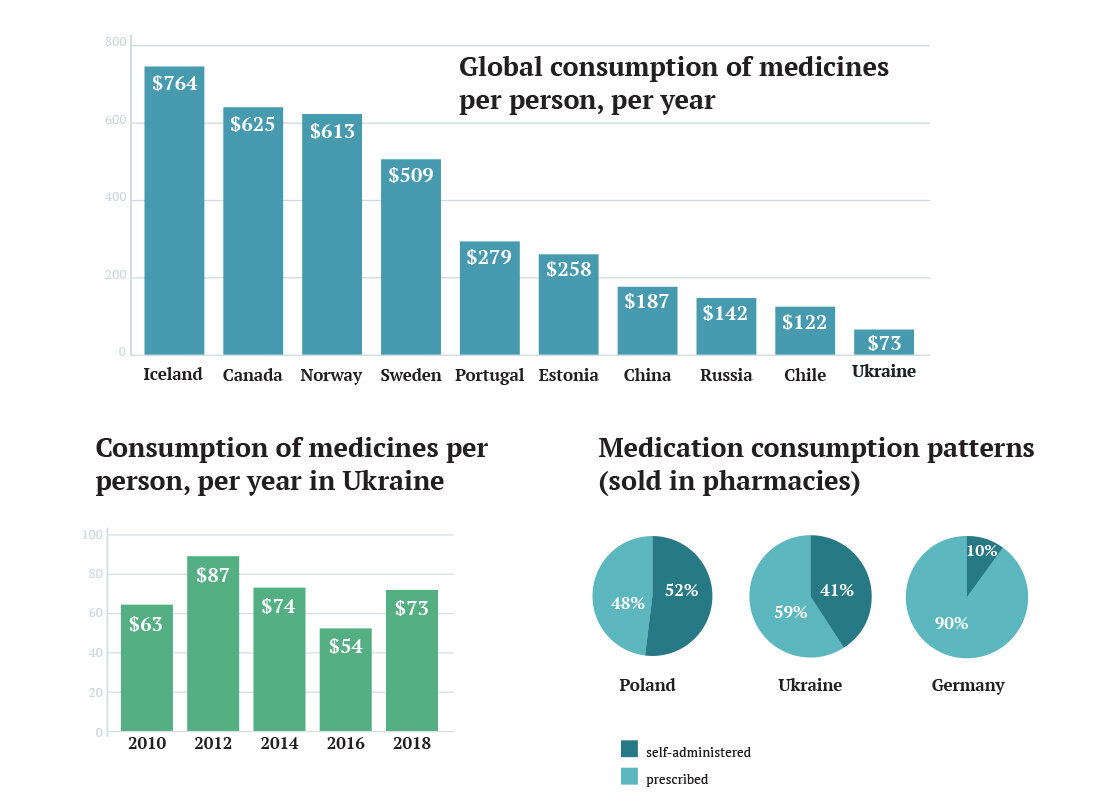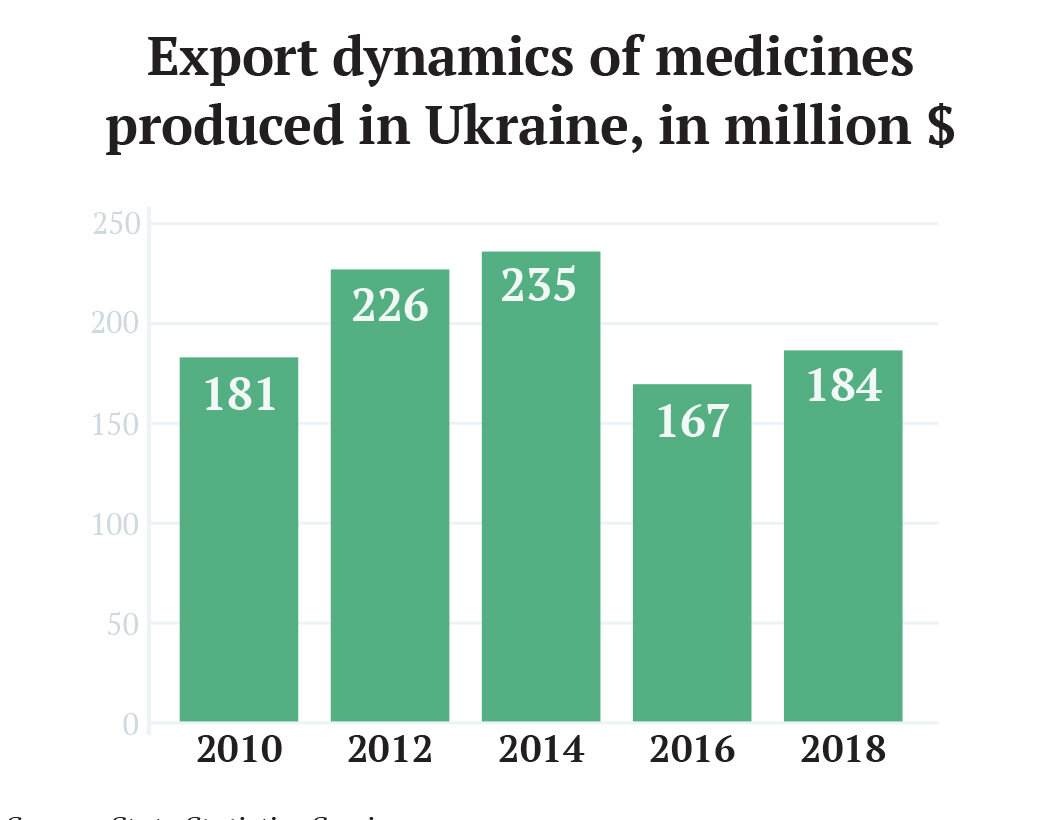The COVID‑19 pandemic has killed more than 1,000 people in Ukraine and damaged its economy. But there may be a silver lining.
Laboratories, once scorned and ignored, have soared to prominence. This is good news for public health — people now understand the need for regular testing. It’s also great news for private laboratories, a nearly 200-million-euro industry, whose growth in Ukraine has been hamstrung by poor public understanding and a lack of infrastructure.
“Even a year ago, we were banging our heads against the wall, explaining that you have to go get tested not just when you’re sick but to monitor your health and take preventive measures,” said Nikolay Skavronsky, the commercial director of Synevo Ukraine. “Now, after coronavirus, … there was a major shift in people’s mentality.”
“That’s a very big push towards the development of the market,” he added.
Synevo Ukraine is a top player in the country, with more than 200 locations and over 8 million people served. It’s part of the international Synevo Central Labs chain, which also operates in Poland, Romania, Germany, Belarus, Bulgaria, Serbia, Moldova, Georgia, Turkey and Russia.
The company performs hundreds of types of tests in its high-tech, fully-automated headquarters in Kyiv, as well as several regional branches in Lviv, Odesa, Chernivtsi, Vinnytsia, Dnipro, and Kharkiv. Private labs like Synevo tend to be highly advanced compared to their government-run counterparts and can be valuable allies in maintaining public health.
But between state and public distrust and a lack of distributors of laboratory supplies, private lab companies haven’t had the room to grow to their fullest potential.
Despite all this, the sector managed to grow by 20% over the past few years. And while the overall economic crunch of 2020 may cause a 10% decline this year, Skavronsky is optimistic that growth will resume in the future.
“Half a year ago, I had to explain to many doctors the difference between a polymerase chain reaction (PCR) test and an antibody (IFA) test… but now the average citizen understands it no worse than the average doctor because of the massive information campaign,” said Skavronsky. “That’s wonderful.”
“The labs will grow because people will turn to them, and this will pull in the distributors,” he added.

Lagging behind
A nation’s lab sector can be ranked by the amount of money spent on reagents per person per year. Reagents are reactive chemicals that are consumed during tests.
For example, in Germany, about 25 to 28 euros worth of reagents are consumed per person per year. In Poland, it’s about ten euros. Romania, where this figure was only four euros two years ago, has now climbed to eight euros per person per year.
Ukraine lacks these stats. However, the number can be estimated by multiplying per capita healthcare spending by the percent of it spent on lab work. According to Skavronsky, the result is a mere 1 to 1.5 euros per person per year.
And reagents are much more expensive in Ukraine than in more developed countries. When taking the price difference into account, per capita laboratory spending here is even lower.
There are several reasons why Ukraine lags behind. One is a lack of supply distributors. Logistics are underdeveloped and there are no warehouse stockpiles. Reagents that take a day to get in more developed countries can take a month in Ukraine. This discourages laboratory investment, which in turn discourages distributors — a vicious cycle.
Customs can be troublesome as well. One customs regulation requires all incoming goods to be labeled in Ukrainian, which is too costly and troublesome for major western suppliers to bother with, especially for a market as tiny as Ukraine.
Another major reason is cultural, said Skavronsky. Soviet scarcity once promoted the idea of “doctors’ intuition” and downplayed the importance of lab work. This attitude stuck around despite big leaps in technology.
“Sometimes, labs are so advanced that the doctor doesn’t know how to use these lab diagnostics, is ashamed to admit it and doesn’t especially want to learn,” said Skavronsky. This sometimes leads to doctors opposing a larger role for labs. To say that the labs were once treated dismissively, said Skavronsky, would be an understatement.
However, the coronavirus pandemic upended this in just a few months. Suddenly, everyone began to understand how vitally important labs are to control the illness, including doctors, officials and everyday people.
Even though most people would prefer to spend money on movies and popcorn instead of lab tests, the pandemic has convinced more of the public to pay attention to their health and appreciate the importance of regular testing, Skavronsky said.

Quality and efficiency
State labs have been given the leading role in COVID‑19 testing. They have been working around the clock, conducting over ten thousand tests each day, despite limited staff and equipment.
Skavronsky says that these labs can learn better models of efficiency from the private sector, starting with centralization.
“The big advantage of centralization is that if there aren’t enough resources, they’re used with maximum efficiency in a central lab,” he said.
Synevo does most of its testing in its large Kyiv hub. Some tests are done in one of its six Ukrainian regional centers. For some tests, the company sends the samples to its German location.
Government labs are decentralized, with each regional lab center doing its own work. While this cuts down on transportation, Skavronsky says that this consumes more resources. A regional lab doing twenty tests and a central lab doing one hundred tests in a single batch use up similar amounts of materials. Centralization creates more efficiency through economies of scale.
Even running delivery vehicles daily between different labs is more profitable than doing tests in multiple smaller labs, said Skavronsky. Centralization also makes results easier to monitor and quality-control. Doing more tests also enables better quality through being able to afford better equipment.
Finally, having more staff in a central lab makes shift work more reliable. When one employee falls ill in a smaller lab, it’s a big blow to its work capacity, especially when slowing down is not an option. Worse yet, lab technicians working on different stages of a PCR test are not interchangeable. Switching them around risks contaminating the results, making them useless.

The future
In spite of this, in the next decade, Skavronsky predicts that the development of tech and automation will move lab diagnostics back toward a more decentralized model.
This will make it cheaper and easier to do a growing share of tests at a local level or even at home, using consumer gadgets. Meanwhile, data algorithms will gradually replace the work of primary care doctors and laboratories.
“We understand that our business model will change cardinally,” said Skavronsky. “But we are ready for this.”
Synevo will increasingly look toward digital solutions, as its central facilities shift toward being cost centers. Meanwhile, its local sample collection points may transform into small diagnostic clinics that will be able to do many tests on the spot and perform overall health consultation.
